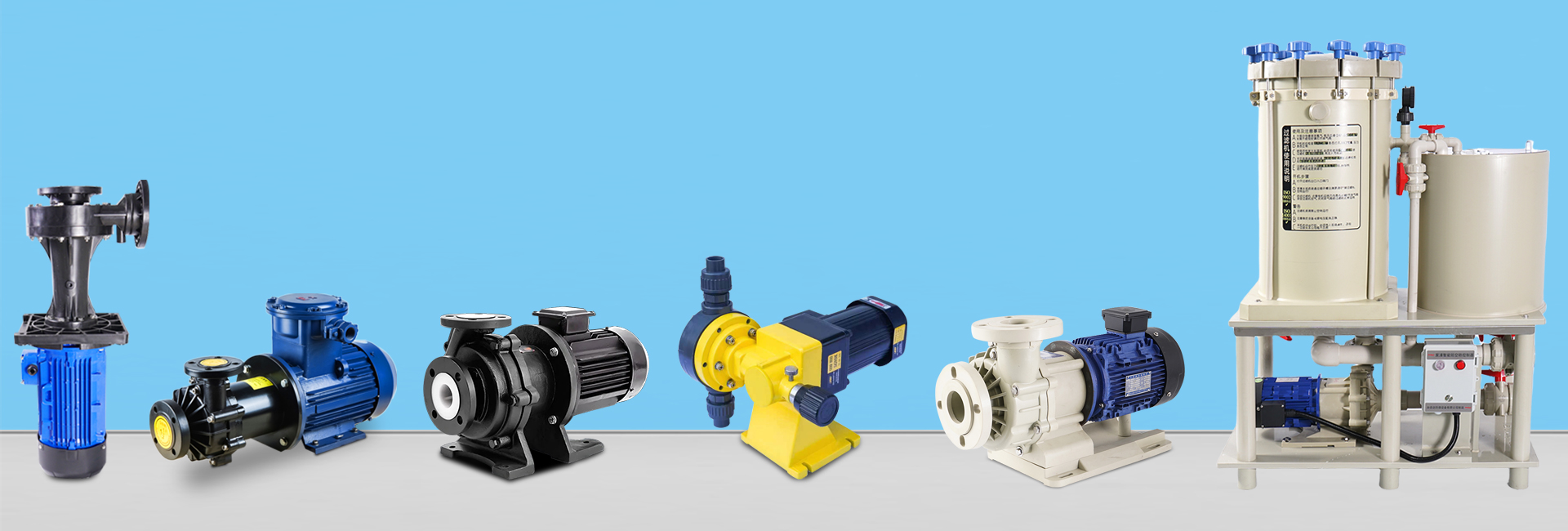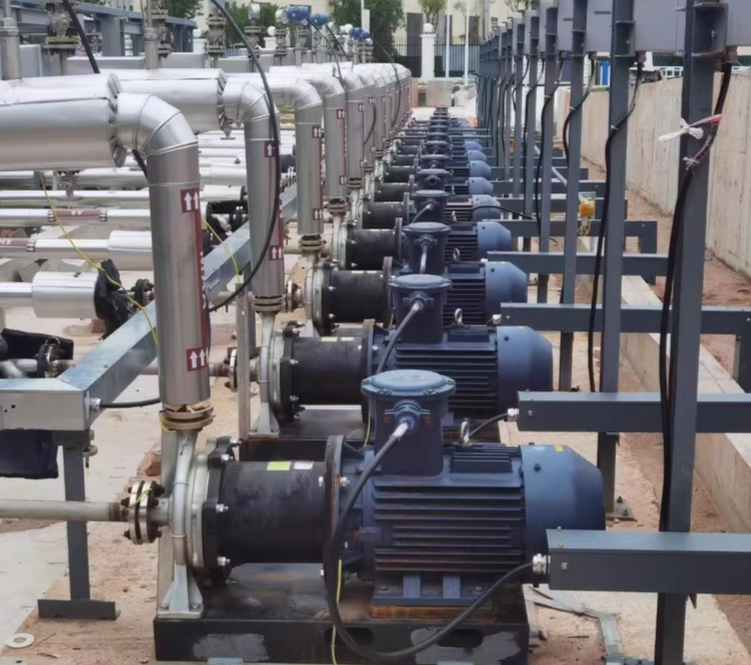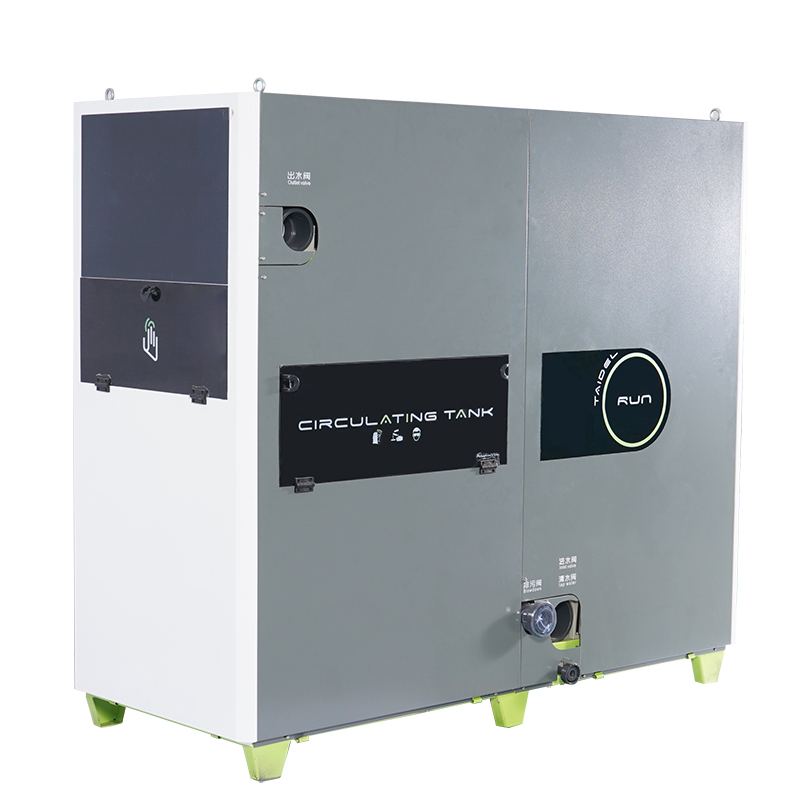In industrial fluid transfer systems, the sealing structure of a pump is one of the most critical factors that determines its safety, reliability, and operating cost.
Both magnetic drive pumps and mechanical seal pumps are widely used in chemical, pharmaceutical, and water treatment industries — yet they differ fundamentally in structure, sealing principle, and performance.
Understanding these differences helps companies minimize leakage risks and reduce maintenance expenses.

1. Structure and Working Principle: From “Contact Seal” to “Seal-Free Design”
Mechanical Seal Pump — Contact-Based Power Transmission
Structure:
A mechanical seal pump uses a mechanical seal assembly consisting of four main parts: a rotating ring, stationary ring, spring, and sealing gasket.
The rotating ring is fixed to the pump shaft and spins with the impeller.
The stationary ring is secured to the pump casing, forming a tight seal face against the rotating ring.
Sealing Mechanism:
The spring provides continuous axial pressure to keep both seal faces tightly pressed together, preventing the process fluid from leaking through the shaft gap.
A seal flush fluid (such as clean water or oil) is often injected to lubricate and cool the sealing surfaces, reducing friction and preventing overheating.
Power Transmission:
The motor drives the pump shaft directly through a coupling, ensuring a short, efficient, and energy-saving power transmission path.
Magnetic Drive Pump — Non-Contact “Magnetic Coupling” Design
Structure:
A magnetic drive pump consists of an outer magnet, inner magnet, and a separation shell (containment shell).
The outer magnet is connected to the motor shaft.
The inner magnet is attached to the impeller and located inside the sealed pump chamber.
The containment shell (made of stainless steel or fluoroplastic) completely separates the inner and outer magnets, creating a fully sealed, leak-free system.
Sealing Mechanism:
When the motor rotates the outer magnet, magnetic force drives the inner magnet and impeller to rotate synchronously.
Since there is no direct shaft penetration through the pump casing, the pump achieves true “zero leakage” without the need for any mechanical seal or seal liquid.
Power Transmission:
A small amount of magnetic slip (3–5%) may occur between the inner and outer magnets, resulting in slight energy loss.
The performance of the magnetic coupling depends on the magnet material (commonly NdFeB or SmCo) and the temperature and corrosiveness of the pumped medium.
2. Performance Comparison: Safety, Maintenance, and Efficiency
| Comparison Aspect | Mechanical Seal Pump | Magnetic Drive Pump |
|---|---|---|
| Leakage Risk | Medium to high: prone to wear, spring fatigue, or seal face damage; requires leakage monitoring for toxic or flammable media. | Extremely low: no shaft penetration; only the containment shell could fail (rare); achieves near “zero leakage.” |
| Maintenance Cost | High: ① Seal components wear out quickly (every 3–6 months); ② Requires disassembly by skilled personnel (4–8 hours downtime); ③ Regular refill of seal liquid needed. | Low: ① No mechanical seal parts; magnet and shell last 2–3 years; ② Simple inspection of bearings and magnet assembly; ③ No sealing liquid or consumables required. |
| Operational Stability | Medium: seal wear or contamination can cause sudden leaks; insufficient flush fluid may lead to dry friction and seal failure. | High: contact-free design minimizes mechanical wear; must avoid dry running or air entrapment (can cause magnet decoupling or shell overheating). |
| Energy Efficiency | High: direct mechanical drive with no magnetic slip; efficiency >90%; ideal for large flow and high head. | Medium: 5–10% energy loss due to magnetic slip and eddy currents; not recommended for ultra-high pressure (>1.6 MPa). |
| Suitable Fluids | Neutral, non-corrosive, low-viscosity fluids (e.g. water, oil, diesel); double-seal designs can handle mildly toxic liquids. | Corrosive, toxic, or high-value fluids (e.g. acids, alkalis, solvents, rare metal solutions). |
3. Pump Selection Guide: How to Choose the Right Type
Step 1: Identify the Fluid Characteristics
For toxic, flammable, corrosive, or high-value media, a magnetic drive pump is the safest and most reliable option.
For neutral fluids such as clean water or lubricating oil, a mechanical seal pump offers higher cost-effectiveness.
Step 2: Evaluate the Operating Conditions
For continuous operation and process-critical systems (e.g., chemical reactors), choose a magnetic drive pump for its low-maintenance performance.
For high-flow or high-head applications (e.g., cooling water systems, power plants), a mechanical seal pump provides better efficiency.
Step 3: Compare Life-Cycle Costs
Mechanical Seal Pump: Lower purchase cost (≈50–70% of magnetic drive pump), but higher annual maintenance and downtime expenses.
Magnetic Drive Pump: Higher initial investment, but 70–80% lower yearly maintenance costs. Over a 3-year service life, total cost of ownership is typically lower.
4. Conclusion: Balancing Safety, Efficiency, and Cost
Magnetic drive pumps and mechanical seal pumps are not direct substitutes — each serves specific industrial needs.
When leak prevention, safety, and environmental compliance are top priorities, the magnetic drive pump is the superior choice.
When energy efficiency and initial cost are more critical, the mechanical seal pump remains a strong performer.
By understanding their fundamental differences, engineers and plant managers can select the optimal pump solution that achieves the perfect balance between safety, performance, and economy in any industrial fluid system.







